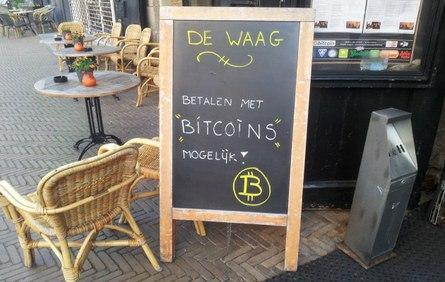
text by Florian Hauschild, translation by NUFCrichard, photo by Targaryen
What exactly lies behind the system of bitcoin? Which chances and disadvantages does it entail? And are there yet noteworthy successive projects?
Since the middle of 2013, the mainstream media hasn’t been able to spin Bitcoin as just an underground hacker‘s obsession anymore. With the closure of the online drug marketplace “Silk Road”, that only accepted Bitcoin as payment, the image of the Cryptocurrency has been improved. Even eBay suggesting that it may accept Bitcoin in the future.
But what is the deal with this pioneering alternative currency? What are the biggest problems and which follow-up projects deserve to be looked at more closely? Take a step into the Crypto scene and you’ll find an intelligence network of developers and followers. The original idea behind the Crypto scene was in direct opposition to the current money system. All new projects (called Altcoins) are openly discussed during development, then published and analysed by the community, allowing newbies to quickly discover what is going on and who is responsible for each project.
Speculation, conjecture and analysis are standard practice. The pessimists see such practices as a negative, whereas the optimist knows that it is better to have everything out in the open so they can be freely discussed. This way of thinking and organisational structure offer the perfect platform for innovation to take place.
The cryptocurrency review presented by the mainstream media makes the crypto scene look like something out of the far future. They question whether Bitcoin can establish itself or if it’s just a speculative bubble, ready to pop. But in specialised internet forums, unseen by the masses, quantum leaps in the fields of computer science and theoretical mathematics are being made, these theories are quickly accepted, rejected or disputed, but everything is open for further scrutiny and development by the community.
Here the question isn’t so much whether Bitcoin will survive, rather which parts of it are going to be most useful and allow crytocurrencies to be used as the actual payment method of the future.
The crypto scene is on track to break through the oligopoly of the bank cartels, ending their 100 year reign of terror over the monetary system.
These banks have authority not just over the people, but also more recently over whole countries that they have brought to ruin. They left their debts for the working classes and the small businesses to repay. It’s hardly a surprise that cryptocurrencies, when the banks that be run the whole monetary system like a Ponzi scheme, without the knowledge of the general public.
As the public have little knowledge of the current monetary system, they can hardly be expected to understand the need for a new decentralised monetary system. Empowered with this knowledge of the tools the authorities use against the public, more can be expected.
How does Cryptocurrency work?
The basics of Bitcoin are readily available in the internet for all to see, and do not need to be elaborated upon here. However, what is not so clear, and is often misunderstood, is the process of mining, the method by which Cryptocurrencies are generated.
In oppose to what is often written about it, mining is only a small part of the process in alternative payment systems. Miners use the computing power they have available to mint new digital coins. These coins can then be bought or sold using Dollars or Euros, or spent in transactions, moving the newly minted coins into circulation. The monetary gain of the miner is like a reimbursement for their work. The minting of the new coins is only the birth of a coin that can then be used in transactions, just like any other coin.
In the case of Bitcoin, the algorithm behind it is very complex and mining therefore very resource intensive. The acquisition of ever more expensive mining rigs is necessary to stay involved in the mining process. This, in turn, makes the coins more expensive to bring into circulation.
The resulting problem is that the distribution of Bitcoin is very uneven. This is mainly due to the “Early Adopters” who were able to mine very easily and were able to acquire large numbers of bitoins. To many new Bitcoin users, this situation seems very unfair.
Philosophically speaking, you could say the opposite is true, that the “Early Adopters” were the pioneers that build up the entire system. It is also true that there is much more to the coin than just mining. The community, the press, education process and the development work are also required to build a successful coin. These tasks are undertaken by small groups of supporters of the currency.
Everyone should be aware: the establishment and implementation of a new alternative monetary system is no small task. Years of dedication is required to drive forward the acceptance of the payment method for trade, this is the point Bitcoin finds itself at now, at the end of this journey, not the beginning. On this journey expect frequent smear campaigns with misrepresentation of facts, denouncements and derogatory campaigns. The successful endpoint will be the breaking of the current banking monopoly. Those that adopt cryptocurrencies are sure not to make many friends in the system. However, ultimately, the advantages will outweigh the disadvantages.
Economically speaking, the uneven distribution of Bitcoin is a problem. The price is unstable and volatile because a high number of coins are not actually available on the market, along with market manipulation by the major Bitcoin holders. Overall the demand is greater than the supply, resulting in the high price of Bitcoin, leading to most Bitcoin payments being a slightly awkward to work out decimal, such as 0.0013202 BTC.
What comes next? What can we actually use it for?
Other than the well-known Bitcoin alternatives, like Litecoin and Peercoin, (a full list of projects can be found here Coinmarketcap) there is a new up and coming coin on the scene. It is called Quark. The name Quark comes from a subatomic particle in quantum physics, it means nothing more than “Elementary”, which also is a good explanation of the project, Quark should be distributed widely so that is a truly usable cryptocurrency.
Quark does things a little differently than most of Bitcoins followers, the so called Clone coins, with only a few lines of code changed from the original.
The architecture is made of a complicated multilevel algorithm, which not only increases security, but also makes ASIC (Application Specific Integrated Circuit) mining near impossible. This means that minable can be done by the masses, not just the few. Mining takes place using the CPU of any standard home PC. The so called “block interval” is only 30 seconds (in opposed to 10 minutes with Bitcoin) meaning transactions occur far faster with Quark.
In the first 6 months of Quarks existence, almost all of the coins that will be mined, were mined, a total of 247 million (10 times more than the final number of Bitcoins). In the future only 1 million Quarks will be mined every year, giving a stable inflation rate of 0.5%, so that Quark is a true currency for trading, not just something to speculate on or to hoard away.
Over 100 miners are now working on minting new Quarks in order to distribute the coins. These are then traded on marketplaces like Cryptsy, the current “number one” marketplace for trading altcoins.
The large number of early adopters in comparison with Bitcoin means that the coins have been more fairly distributed from the start. Investors can buy in, safe in the knowledge that the concept is self-supporting. Many sceptical sellers are selling out at current prices. The current daily volume of traded Quarks is about 1000 Bitcoins, or 1 million dollars. This results in a price that is only 10 euro cents per Quark. Up until recently, when Quark was relatively unknown, the value of a Quark was only around about 0.02 euro cents. The community is ecstatic with the recent prices move, moving the price to a fairer level.
A lot has been said about how good a coin can be that has been almost completely mined and distributed before most people even knew what it was. On the other hand, in many other projects the production of the currency is not possible for the normal end user. It has also resulted in the distribution of Quark being a low resource and low power affair, in comparison with other more energy hungry projects.
Whether or not Quark is successful in becoming an everyday payment method, or if this project is just another step on the way to a truly useful alternative payment system, is not yet clear, but what is clear that the established institutions that control money as we know it, already know that they have competition on their hands.
There are certainly interesting times ahead!
–
Support the author:
BTC: 1F3XLmGCKL8JV3YsFoL1LHLNSvy4SPVwMc
QRK: QLew5J8aKinNybZbEnx2YVBrcwpMonYmcY
–
Support also the translator:
QRK: QMxwjoSuf182TJPM96y6SiN7CyUhy18Diw
–
Text under Creative Commons licence for free distribution. Please don’t make changes and copy also the support-adresses and links.
If you want to translate this text to other languages please contact me: the-babyshambler@gmx.de
Sourcecode (german): http://the-babyshambler.com/2013/12/11/beenden-wir-die-macht-der-banken/

